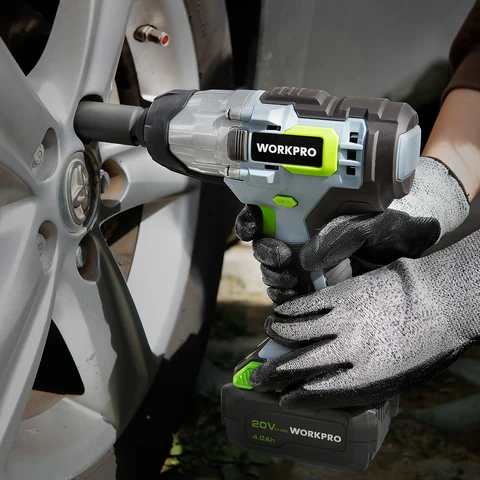Torque wrenches were born as a necessity. These tools powered the automotive industry like never before, improving the performance of workers on an assembly line. However, the high demand for cars and other products demanded the invention of a more powerful and faster tool.
The solution to the problem came with the invention of the first impact wrench. These tools let you apply high torque without effort. While in the past workers had to use muscular force to tightening or loosening bolts, now they only needed to pull a trigger to get the job done.
If you’re curious to learn more about these wonderful tools, you’re certainly in the right place. Today we’ll explain you how does an impact wrench work and we’ll show you all the different types currently available on the market. Finding the best impact wrench for you will be much easier once you go through this guide.
Electric impact wrenches are powered by electricity. They can be corded or cordless. Corded models need to be plugged into an outlet to work. They’re very powerful but not practical when you need to use them in places away from electric power sources.
On the other hand, cordless models use a brushless motor powered by a nickel-cadmium or lithium battery. Brushless motors have a superior lifespan because they don’t produce friction between the rotor and the stator. This means less waste, less noise, and less maintenance.
However, brushless motors aren’t as powerful as conventional electric motors. So, the torque generated by a cordless impact wrench is quite limited compared to a corded impact wrench. Also, batteries tend to discharge too quickly, forcing you to stop during work to recharge.
Cordless models are a lighter and more portable option compared to corded impact wrenches. Also, they’re perfect to work on difficult corners where working with an electric cord is uncomfortable.
Pneumatic impact wrenches are powered by compressed air. So, they necessarily need to be connected to an air compressor to work. Pneumatic models are much more powerful than the electric types when compared, but they’re much more difficult to transport.
So, they necessarily need to be connected to an air compressor to work. Pneumatic models are much more powerful than the electric types when compared, but they’re much more difficult to transport.
So, if you intend to carry your pneumatic tool to different places, make sure the air compressor has big and resistant wheels.
Unlike electric models, pneumatic impact wrenches don’t let you to adjust torque. So, it isn’t recommended to use them on rusted bolts, because excessive torque may break them.
Hydraulic impact wrenches are the most powerful of all. They’re stationary and are usually used for industrial purposes. These tools are powered by hydraulic fluid pumped at high pressure.
Impact wrenches use a motor and a spring to accelerate a rotating mass known as a hammer (no, we are not talking about the framing hammer). During this process, the hammer hits the output shaft (also known as anvil) to generate torque impact.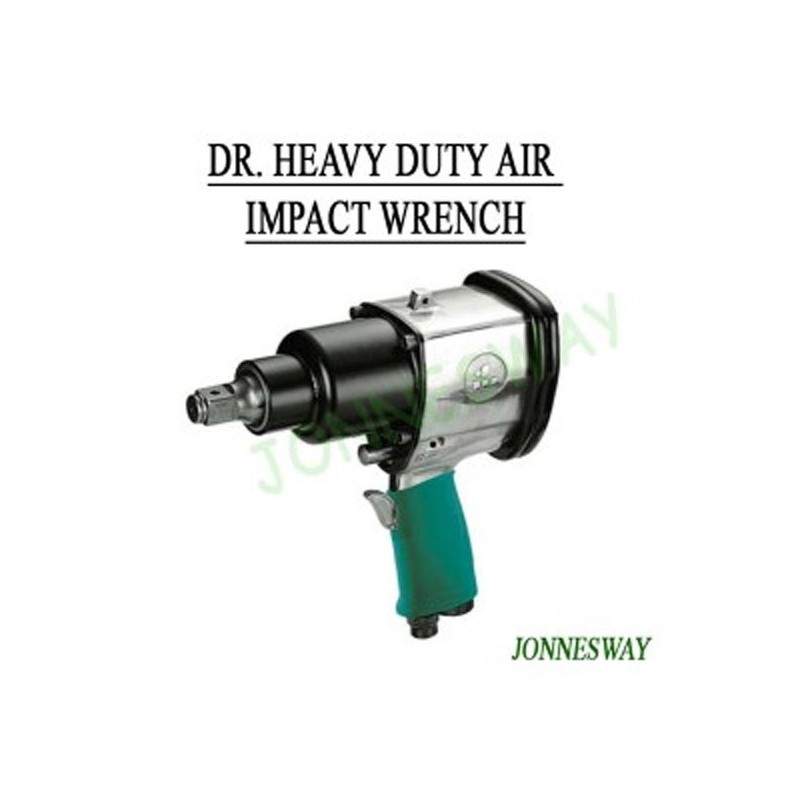
In a single revolution, the hammer hits once or twice the anvil. Those models that deliver only one hit per revolution can generate more torque than the rest.
Usually, the hammer is able to rotate and slide on a pivot while a spring holds it at the bottom. There’s also a steel ball between the anvil and the hammer. This steel ball slides the hammer backwards and compresses the spring at the bottom if the input shaft spins ahead of the hammer.
Below the hammer there are metal teeth that lock the hammer, turning the acceleration into torque impact. When the hammer stops, the input shaft keeps turning and slides the steel ball forward. At this point, the hammer and spring are released to restart the cycle.
When there’s no high load on the rotating head of the wrench, the ball won’t compress the spring and the impact wrench will run smoothly as a common drill.
On other models, there are two pins on the input shaft that work as clutches. In this configuration, the metal ball compresses the pins against a spring. When the pins slide outwards, they hit the anvil and generate torque impact. In this case the hammer speeds up much more and applies more torque. However, the higher impacts also tend to damage the teeth.
When the pins slide outwards, they hit the anvil and generate torque impact. In this case the hammer speeds up much more and applies more torque. However, the higher impacts also tend to damage the teeth.
Another configuration uses a swinging weight and a protrusion around the anvil’s pivot. While the hammer rotates, the swinging weight is placed in position for impact after hitting the anvil. Finally, the swinging weight transfers the energy of the impact to the rotating head of the wrench.
This configuration delivers a single hit per revolution, which means a greater torque generation. However, it also transfers too much vibration, which is annoying for some users.
As you can see, not all impact wrenches work the same way. There are at least three different ways to generate torque for safely tightening and loosening bolts. However, in each case, the principle is always the same. A rotating hammer that hits an anvil and transfers the energy of the impact to the spinning head of the wrench.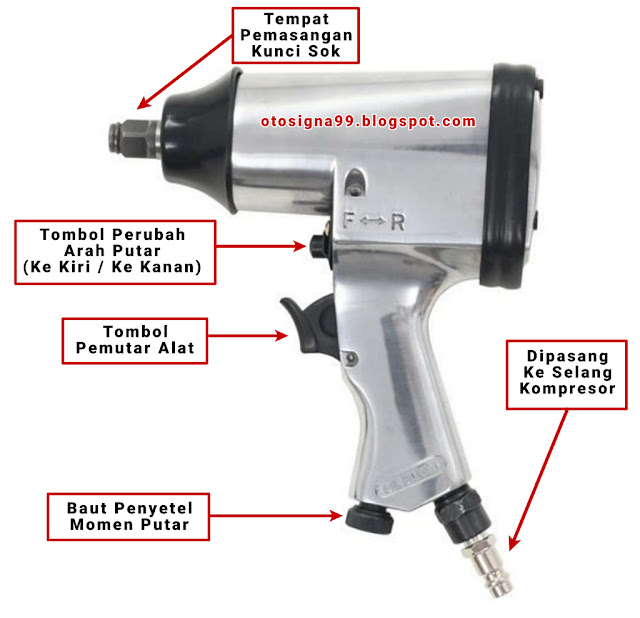
Now that you know how does an impact wrench work, you can quickly identify each of its parts and the possible causes of a certain failure. Indeed, the more you know your tool, the better prepared you’ll be to properly use it.
Q. 1: Is it possible to use an impact wrench as a drill?
Yes. You can adapt a drill bit to your impact wench to use it as a drill. However, in these cases it’s recommended to use a model with a torque adjustment system.
Q. 2: Can you use an impact driver as an impact wrench?
Yes. An impact wrench can perform all the basic functions of an impact driver. However, impact wrenches are much more powerful than impact drivers.
Q. 3: What is the best compressor for an impact wrench?
It all depends on the air pressure and the CFM required by your wrench. You can find these requirements on the user manual of the product.
Q. 4: Is it possible to use an impact wrench to loosen lug nuts?
Yes.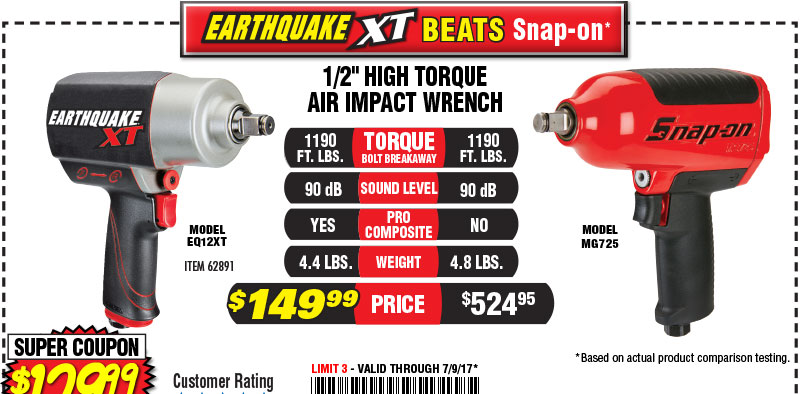 You can use a torque wrench for loosening and tightening lug nuts. If you intend to use an air impact wrench, you should be careful to not exceed the applied torque so as not to break the nuts.
You can use a torque wrench for loosening and tightening lug nuts. If you intend to use an air impact wrench, you should be careful to not exceed the applied torque so as not to break the nuts.
Q. 5: What is the main purpose of impact wrenches?
Impact wrenches were initially created for tightening and loosening bolts without the application of muscular force. However, modern models can also work as drills and impact drivers.
Q. 6: When it isn’t recommended to use an impact wrench?
It isn’t recommended to use an impact wrench when the minimum torque generated by the tool exceeds by far the torque required by the bolts. It’s also not recommended to use them when the bolts are rusted or visibly damaged.
May 09, 2022
This guide covers:
Designed to effortlessly deliver high torque output used to loosen or tighten bolts, lug nuts and fasteners, Impact Wrenches are used in a wide range of environments from DIY enthusiasts to professionals in tyre shops, heavy plant/ equipment maintenance, assembly, construction - generally anywhere that requires extra powerful tools.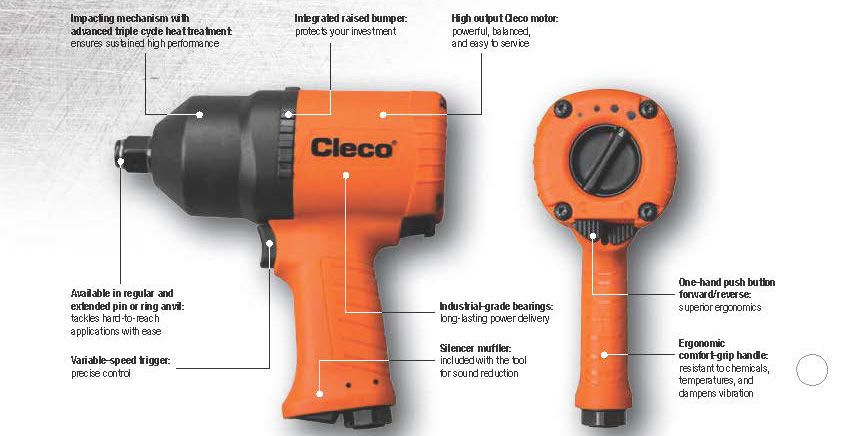
An Impact Wrench features an electric or air motor that applies short bursts of a twisting motion that is effective at loosening (or tightening) bolts.
The high torque output is produced through a hammering action at a low speed – rather than constant rotations at high speed like that of an air drill.
The main difference between an impact wrench and impact driver is that an impact wrench features a square drive and can be fitted with different sizes of impact sockets which fit onto a wheel lug. Alternatively, an impact driver features a hex driver and is used for driving screws.
An Impact Ratchet also has a square drive, however there is a smaller range of drive sizes for ratchets; 1/4, 3/8 or 1/2 inch, whereas Impact Wrenches are available with either a 1/4, 3/8, 1/2, 3/4 or 1 inch drive.
Impact Wrenches are generally heavier and provide more power (torque) than impact drivers and ratchets.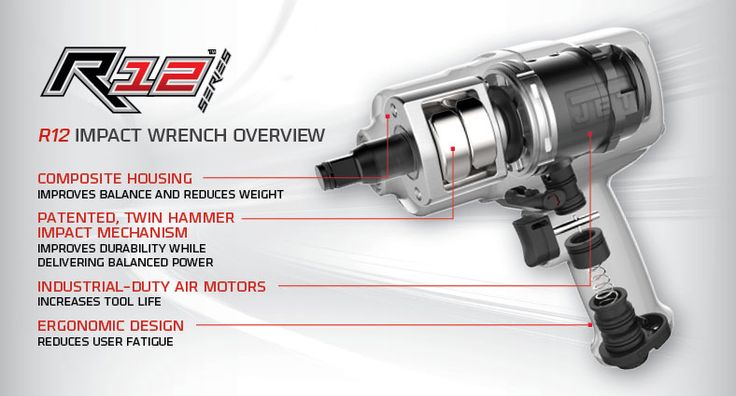
Since Impact Ratchets provide a lower torque output than an Impact Wrench, they are ideal for tightening and removing smaller lug nuts and bolts. Impact Ratchets are also smaller in size and lighter in weight, this gives the user greater control and makes ratchets perfect for work in confined spaces such as small engine repairs and transmission work.
You may notice PCL’s Impact wrenches belong to either the PRESTIGE or PRO range.
The PRESTIGE range is PCL’s premium range of air tools which provides the ultimate in performance for the serious professional user. Impact wrenches in this range can be distinguished by the black/grey and blue design and feature an ergonomic handle and lightweight body - designed to reduce fatigue during prolonged periods of usage therefore ideal for environments such as tyre shops, who frequently use Impact Wrenches.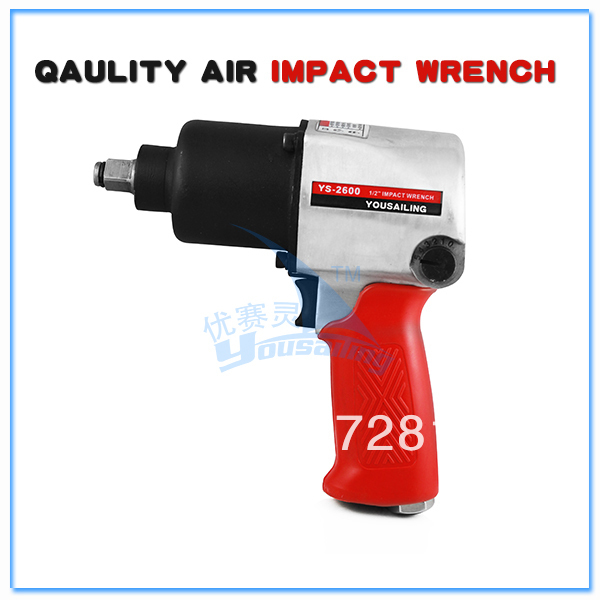 Tools in this range, also have reduced noise and vibration output compared to other tools on the market.
Tools in this range, also have reduced noise and vibration output compared to other tools on the market.
PCL’s PRO range is aimed at the everyday tradesman who requires a price competitive air tool without the worry of compromising on quality or performance. Specifically designed to withstand the rigours of day to day use in the heaviest of workshop and tyre environments, PCL’s PRO range delivers without exception.
When purchasing an impact wrench, you will need to consider the drive size.
Impact wrenches are available in the following sizes: 1/4 inch, 3/8 inch, 1/2 inch, 3/4 inch or 1 inch.
The smallest sizes, 1/4 and 3/8 inch are ideal for working in confined spaces and more suitable for where accuracy and precision is key.
PCL's 3/8 inch Impact Wrenches
The most common size is 1/2 inch as it is suitable for most applications.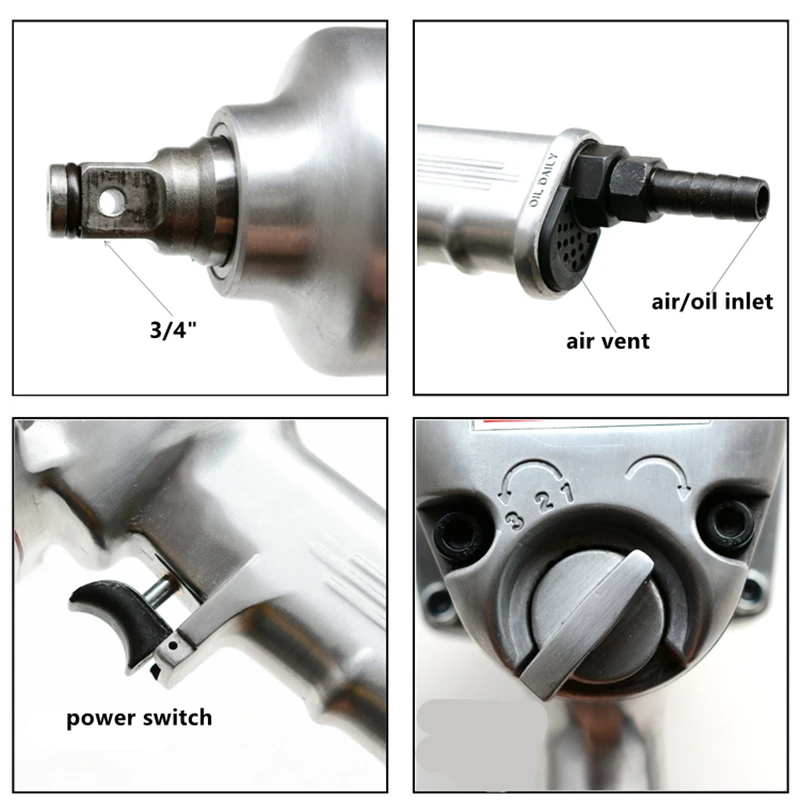 The 1/2 inch will provide enough power and precision when working with regular-sized vehicles.
The 1/2 inch will provide enough power and precision when working with regular-sized vehicles.
PCL's 1/2 inch Impact Wrenches
The most powerful Impact Wrenches tend to be 3/4 or 1 inch, and are commonly used in industrial applications such as construction and large tyre applications.
PCL's APP271 PRESTIGE 1 inch Impact Wrench in use
Whichever size you decided, remember to always select the right impact socket and you should never use a regular socket.
It is highly important to consider torque when selecting an air impact wrench.
Using an impact wrench with a higher torque than necessary can result in over-tightening of nut and bolts, which could lead to severe damage. Not enough torque is also highly dangerous as it leads to under-tightening which could result in a wheel nut becoming loose when the car is driving down the road.
What torque does your application require? If you are unsure, then we recommend referring to the manufacturers manual or packaging of the component that you are tightening.
If using an impact wrench or similar impact tool, it is recommended to check the nut with a manual torque wrench for precise accuracy.
High Torque Impact Wrenches
|
Part No. APP210S |
Part No. APP234 |
Part No. APT266 |
If you plan to use the air tool over long periods, it is important to select a well-balance tool that is comfortable and lightweight enough to hold over several hours.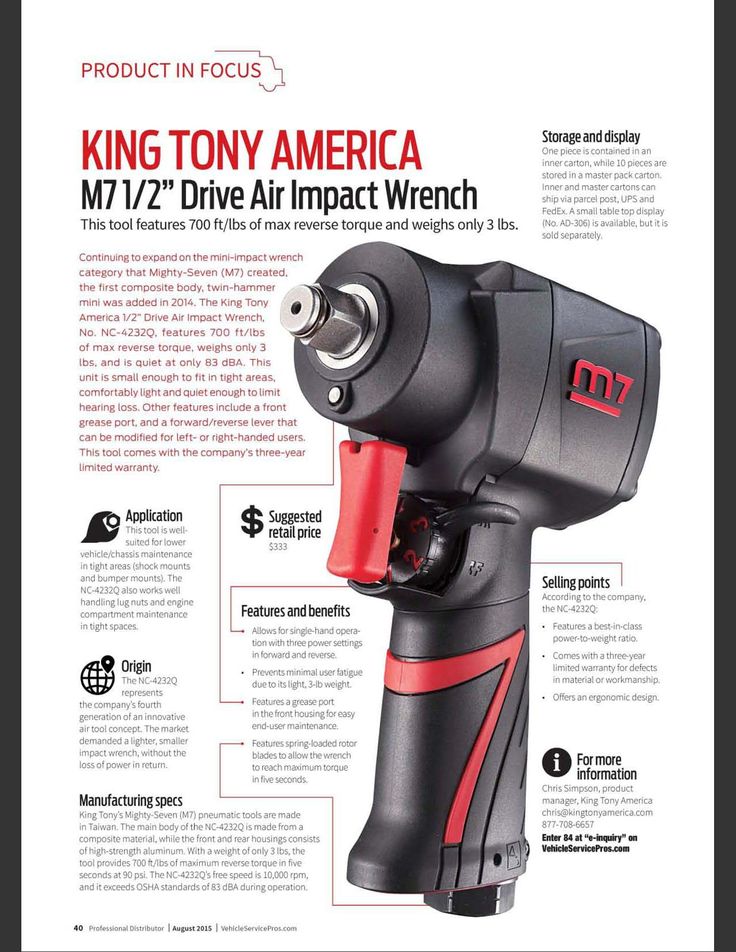
Lightweight Impact Wrenches
SoundProlonged exposure to loud noise can result in irreversible damage to your hearing, therefore if you plan to use the tool over long periods it is recommended to select a tool with lower noise levels where possible. Hearing protection must always be worn for exposures above 85 dBa.
Low Noise Impact Wrenches
VibrationFor a safer and more comfortable experience, opt for a lower vibration level if you plan to use the tool over long periods regularly as high exposure to hand-arm vibration can lead to permanent health effects.
Low Vibration Impact Wrenches
Compressor tank sizeConsider how you are going to power the tool and ensure that the compressor is suitable for the tool and application.
Generally using a tool that operates in short bursts like an impact wrench, 6 seconds.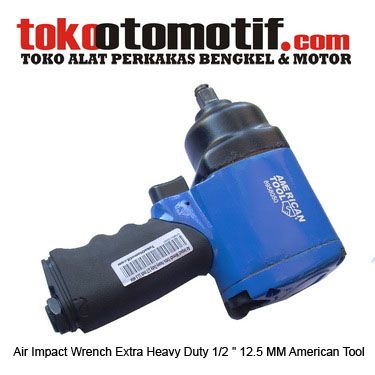 The table below shows how many seconds each PCL impact wrench should run with various size compressors.
The table below shows how many seconds each PCL impact wrench should run with various size compressors.
|
Part No |
Description |
stated cfm |
24 l |
50 l |
100 l |
150 l |
200 l |
|
APP210S |
PRESTIGE 1/2 inch Heavy Duty Impact Wrench |
6.5 |
4 |
8 |
16 |
24 |
33 |
|
APP203T |
PRESTIGE 1/2 inch TURBO Impact Wrench |
4. |
5 |
11 |
23 |
34 |
45 |
|
APP200 |
PRESTIGE 1/2 inch Stubby Impact Wrench |
4.3 |
6 |
12 |
25 |
37 |
49 |
|
APP201 |
PRESTIGE 1/2 inch Impact Wrench |
2.7 |
9 |
20 |
39 |
59 |
78 |
|
APT205 |
PRO 1/2 inch Impact Wrench |
3. |
7 |
15 |
29 |
44 |
59 |
|
APT208 |
PRO 1/2 inch Aluminium Impact Wrench |
3.9 |
7 |
14 |
27 |
41 |
54 |
|
APT233 |
PRO 1/2 inch Composite Impact Wrench |
4.8 |
5 |
11 |
22 |
33 |
44 |
|
APP101 |
PRESTIGE 3/8 inch Impact Wrench |
9. |
3 |
6 |
11 |
17 |
22 |
|
APT105 |
PRO 3/8 inch Impact Wrench |
3 |
8 |
18 |
35 |
53 |
71 |
|
APP234 |
PRESTIGE 3/4 inch Impact Wrench |
6.9 |
4 |
8 |
15 |
23 |
31 |
|
APP271 |
PRESTIGE 1 inch Impact Wrench |
9. |
3 |
6 |
11 |
17 |
22 |
|
APT263 |
PRO 1 inch Impact Wrench with 200mm Extended Shank |
22.9 |
1 |
2 |
5 |
7 |
9 |
|
APT265 |
PRO 1 inch Pistol Grip Impact Wrench |
11 |
2 |
5 |
10 |
14 |
19 |
|
APT266 |
PRO 1 inch Hercules Impact Wrench with 200mm Extended Shank |
9. |
3 |
6 |
11 |
17 |
22 |
See our handy guide on selecting the right compressor for more details.
Download the comparison of all PCL Impact Wrenches
All servicing and repairs must be carried out by qualified service technicians.
Don’t forget to oil the impact wrench the first time you use the tool from new.
Lubrication is an important aspect of air tool maintenance.
Remember to add a few drops of air tool oil into the air inlet, this should be carried out before and after use daily to prevent rust build up.
If the impact wrench is frequently used, it is recommended to fit a lubricator at the final stage downstream on the air supply after any filtration. In-line lubricators such as the INL6 can be connected on the tool or hose itself.
You should only use clean, dry, regulated compressed air as a power source for an impact wrench. Read our handy guide on why it is important to use FRL units and how to choose the correct air treatment unit.
PCL's APP210S Impact Wrench with INL6 In-line Lubricator
To achieve optimal tool efficiency and ensure safety, it is important to only use correctly sized impact sockets on impact wrenches.
You should never use regular sockets on impact sockets as this can cause damage to the anvil – more detail can be found in our handy guide.
It is important to keep the body of the impact wrench clean and free from debris as accumulated dirt can cause misalignment or jamming of the parts, which can damage the tool itself.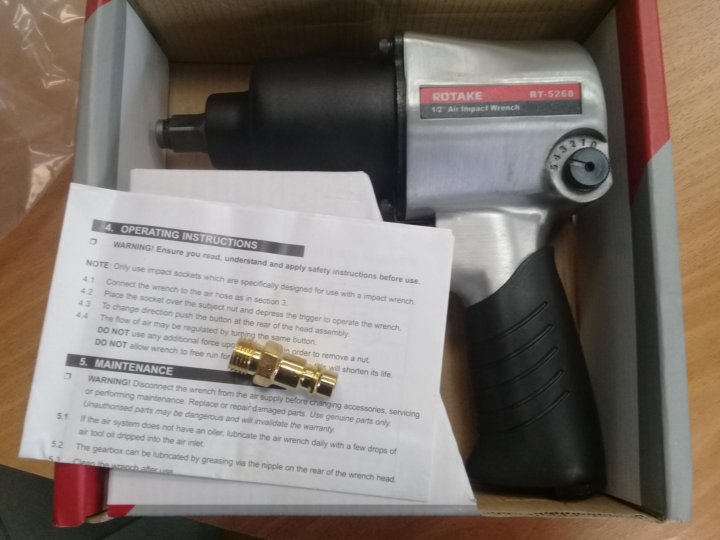
Remember to inspect the impact wrench as well as hose and fittings regularly and before use.
After every use, wipe clean and safely store the tool.
Tip – Use an air blowgun to clean off any debris from equipment. Never point a blowgun towards yourself or anyone else.
Safety guidelines recommend fitting an Air Tool Whip Hose between the air tool and the coupling, this will protect against whip hose and prolong the life of your couplings.
Read more on the importance of using an air tool anti-whip hose.
|
Safety Tips |
|
|
|
|
|
Wear eye and ear protection at all times
Long term exposure to noise produced from the operation of air tools can lead to permanent hearing loss. Air and power tools are capable of propelling materials such as metal chips, saw dust and other debris at high speed, which could result in serious eye injury. To prevent this, it is important to wear PPE equipment when using impact wrenches |
|
|
Prevent the risk of entanglement
Never wear loose clothing or jewellery when using an air tool. Remember to tie or cover hair before use, as tools which contain moving elements or drive other moving tools, such as impact wrenches, grinders, etc, can become entangled in hair, clothing, jewellery and other loose objects, resulting in severe injury. |
|
|
Inspect the impact wrench and accessories for damage
You should never use damaged tools or accessories; this can result in serious injuries. Before using an impact wrench, inspect the tool for any cracks, breakage or other signs of damage. Replace or repair any damaged equipment. Repairs must only be carried out by qualified service technicians. |
|
|
Remember to disconnect the impact wrench when not in use
Never change accessories such as sockets when the impact wrench is still connected to the compressed air. This can cause serious injuries if the tool switches on by mistake. |
|
|
Prevent whip hose
As mentioned earlier, it is recommended to use an anti-whip hose to prevent whip hose. The Health and Safety Executive also recommends the use of a Safety Self-venting Coupling to prevent accidental tool operation and uncontrolled whipping of the hose. Read our full guide on Safety Couplings. |
|
|
Only ever use impact sockets with impact wrenches
For more information, read our guide on the difference between impact and regular sockets and why you should only ever use impact sockets with air tools. |
|
Threaded connections are quite capricious. As soon as a certain layer of corrosion forms on the thread, it becomes problematic to unscrew the nut or unscrew the bolt. There is even such a term: "the carving has become boiled." Although this process has nothing to do with boiling. This is a process associated with corrosion, in which a layer of rust forms between the threads, and the friction in the threaded connection increases so much that it is impossible to unscrew the nut or bolt without destroying this thin layer between the threads. You can try to unscrew it in the traditional way, but then there is a danger that the edges on the bolt head or nut will be torn off. nine0003
And the destruction of the “sticky” layer occurs due to the shock loads that this type of wrench creates. The high frequency of shock loads is able to move almost any threaded connection without much physical effort on the part of a person.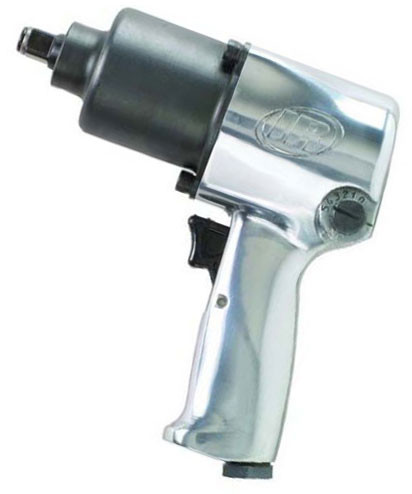 And then the process of unscrewing goes like clockwork.
And then the process of unscrewing goes like clockwork.
You can, of course, pour a special active liquid into each threaded connection, which will partially corrode the layer of deposits between the threads. But the active fluid works very slowly, and the dissolution of deposits is also slow. And with the use of an impact pneumatic wrench, everything happens very quickly. nine0007
Inside the wrench, two power units can be distinguished that operate in different modes. The first block is responsible for the rotation of the wrench head. The second block is for creating shock loads. Rotation occurs through the use of compressed air. Compressed air enters through a hose from the compressor.
There are two channels inside the wrench body that direct the compressed air in different directions with respect to the turbine blades. One air direction gives forward rotation. The second direction of air flow gives reverse rotation. The direction of the air and, accordingly, the direction of rotation is given by a special switch that distributes the air flows. nine0003
The direction of the air and, accordingly, the direction of rotation is given by a special switch that distributes the air flows. nine0003
From the turbine, through the rotor, rotation is transmitted to the working head of the wrench and to the impact mechanism, which consists of two cams (hammers). The cams have a rather complex configuration. If at the moment of unscrewing there is not enough torque to unscrew the nut, the impact force, which is formed by two cams, helps. In the twisting mode, in many models of an impact wrench, the cams (hammers) do not work. Those. the spinning process proceeds normally. There are also systems where only one impact cam is used, and not two. nine0003
The cam impact mechanism is an analogue of a conventional clutch, which starts to work only if certain conditions occur, namely, the appearance of a certain force when unscrewing or tightening. Up to this point, until the force has reached its maximum values, the impact system works like a traditional clutch that transmits rotation.
The main difference lies in the torque that the pneumatic impact wrench creates. The amount of torque a wrench will have depends on the size of the turbine and the number of blades, as well as how much pressure the blower creates. The more powerful the compressor, the more force can be applied to the wrench. nine0003
In addition, the difference lies in the size and shape of the working head of the impact wrench. Some models are available with interchangeable heads to fit different sizes of nuts or bolt heads.
The use of an air impact wrench greatly reduces the time required to tighten or loosen threaded connections. The impact wrench is able to cope with any, even heavily clamped and oxidized threaded connection. Moreover, all the loads will fall on the tool, and not on the person. nine0003
For convenience, pneumatic wrenches can be equipped with additional handles located perpendicular to the axis of the wrench.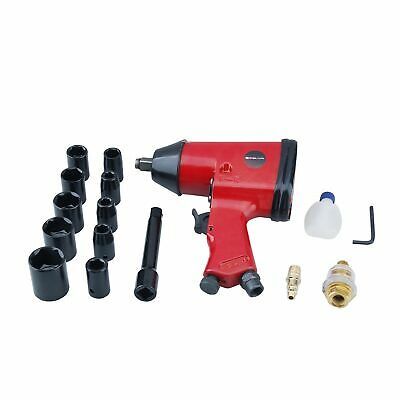 Moreover, additional handles can often be rearranged in one direction or another.
Moreover, additional handles can often be rearranged in one direction or another.
The pneumatic impact wrench is significantly lighter than its electric counterpart. This is due to the fact that the air motor, which is installed in this type of nutrunner, is itself lighter than an electric motor, but no power is lost. It is much easier to work with a light tool. nine0003
In addition, a pneumatic wrench does not get as hot during operation than an electric wrench.
Another advantage is the ability to connect several pneumatic tools to one compressor at once. Naturally, if the compressor is able to create the right pressure and the right amount of air.
First of all, these are large enterprises, namely assembly shops. Where there is a lot of installation and dismantling work associated with threaded connections. There, all the wrenches are connected to a powerful pneumatic line. In workshops that are engaged in tire fitting operations or similar operations related to tightening and unscrewing threaded connections. For example, these are car services that deal with the collapse of the convergence of the chassis of a car, operations related to the repair of car suspension. nine0003
For example, these are car services that deal with the collapse of the convergence of the chassis of a car, operations related to the repair of car suspension. nine0003
In domestic conditions, most likely, it is irrational to use an impact pneumatic wrench. Although there are situations when it is impossible to unscrew a nut or bolt without this tool. But if you approach from the point of view of the cost of acquiring the entire set of equipment, then it is the compressor, and not the wrench itself, that will cost a lot of money.
Any master knows that the most time-consuming process when assembling structures or repairing mechanisms is unscrewing and tightening threaded connections. But if pneumatic wrenches are used for these purposes, then such work turns into an ordinary formality. This handy tool has many advantages, but you should learn more about the nuances of its operation.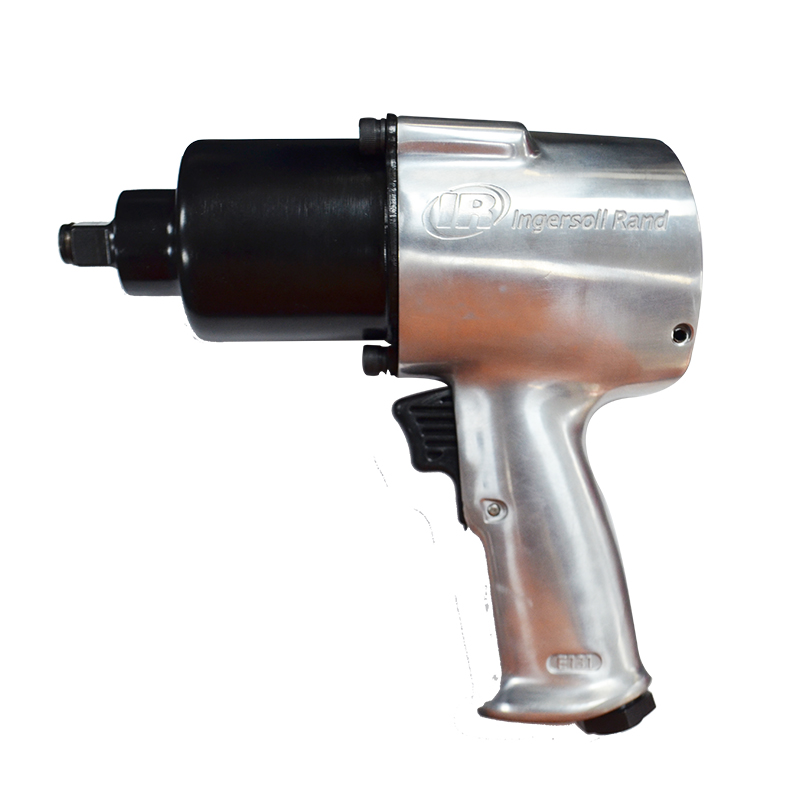 nineOl000
nineOl000
Pneumatic Impact Wrench Design and Operation The figure below shows the pneumatic impact wrench in detail. The unit consists of the following elements placed in a sturdy metal case.
Due to the absence of a motor, this unit is much lighter than its electric counterpart. And the torque of the wrench has high rates - from 300 to 2200 Nm (Newtons per meter). nine0003
Inside the unit, 2 main power units can be distinguished, each of which is designed to operate in different modes. The first block is an air motor that transmits rotational motion to the tool head. The second block is a node that creates shock loads. The pneumatic actuator rotates due to the passage of compressed air through it, supplied through a high-pressure hose from the compressor.
The pneumatic actuator rotates due to the passage of compressed air through it, supplied through a high-pressure hose from the compressor.
The body of the device contains 2 channels . For each of them, the air is directed in different directions relative to the turbine. In the first case, the air pushes the turbine clockwise, that is, to twist, and in the second, counterclockwise, to unscrew the fasteners. Air flows are distributed by a special switch. nine0003
The working principle of the pneumatic impact wrench is as follows.
 nine0054
nine0054 Thus, with the help of a pneumatic impact tool, the process of unscrewing tight bolts and nuts is easy and fast.
Many car enthusiasts, when buying a pneumatic wrench, are wondering what kind of compressor is needed for this unit. First of all, you should pay attention to its performance according to the passport. There is one nuance here: some companies that produce compressors, in order to increase sales, indicate the performance not at the output, but at the input. For example, the documentation for the unit indicates its capacity of 210 liters per minute. This means that this indicator must be interpreted as the rate of air injection by the compressor into itself, that is, into the receiver. At the output, the performance can drop by about 30-40%. And it turns out that the unit actually produces only 146-127 l / min. nine0003
First of all, you should pay attention to its performance according to the passport. There is one nuance here: some companies that produce compressors, in order to increase sales, indicate the performance not at the output, but at the input. For example, the documentation for the unit indicates its capacity of 210 liters per minute. This means that this indicator must be interpreted as the rate of air injection by the compressor into itself, that is, into the receiver. At the output, the performance can drop by about 30-40%. And it turns out that the unit actually produces only 146-127 l / min. nine0003
Based on the above, it can be understood that if the compressor is indicated with a capacity of 210 l / min, then you need to choose a wrench with a significantly lower air jet speed. For example, if the working air flow rate of the tool is 200 l / min, and the compressor according to the documentation is 210 l / min (actually - 146-127 l / min), then you will not be able to unscrew anything with such a tool or tighten it with high quality.
In addition, receiver volume also plays an important role. In household units, the cylinder can have a volume of only 24-50 liters. Under these conditions, the wrench will not work properly. Even with a receiver volume of 50 liters, after a few seconds of operation of the tool, the pressure in it decreases significantly, and in order to continue working, you have to wait until it is restored. Therefore, the compressor receiver must have a volume of more than 50 liters, and the unit itself must create a pressure in it of at least 6.2 kg / cm². Otherwise, the device will not be able to develop the necessary power. nine0003
But the pressure in the system must not be too high. Exceeding the recommended pressure indicator adversely affects the main components of the tool, leads to their rapid wear and, as a result, the failure of the wrench.
The result of the above is this: if the tool is designed for an operating air speed of 119 l / min, and the compressor for the nutrunner produces 135 l / min in reality, then it can be used to unscrew and tighten wheel fasteners without any problems.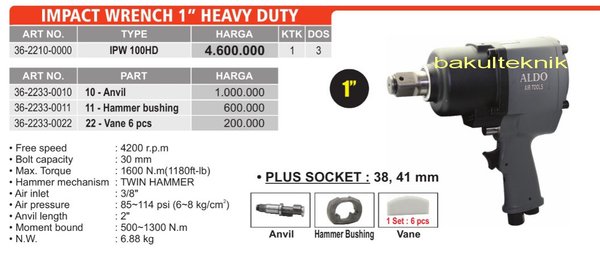 But do not forget that the tool must have a torque of at least 550 Nm. nine0003
But do not forget that the tool must have a torque of at least 550 Nm. nine0003
Please be aware that the hose supplied with the compressor, especially those made in China, will not be suitable for the effective operation of the wrench. Most often, these hoses have an internal section of about 6 mm. This capacity of the hose will not be enough to supply the required amount of air to the pneumatic tool. They, perhaps, can blow off dust, use it for an airbrush, but no more. Even inflating tires with it takes a lot of time. nine0003
It is therefore necessary to obtain another hose with a higher capacity. Ideally, this could be gas hose , which is purchased at a gas equipment store. The marking (Propane-Butane) will be visible on it, as well as the maximum pressure that it can withstand, the value of the inner diameter.
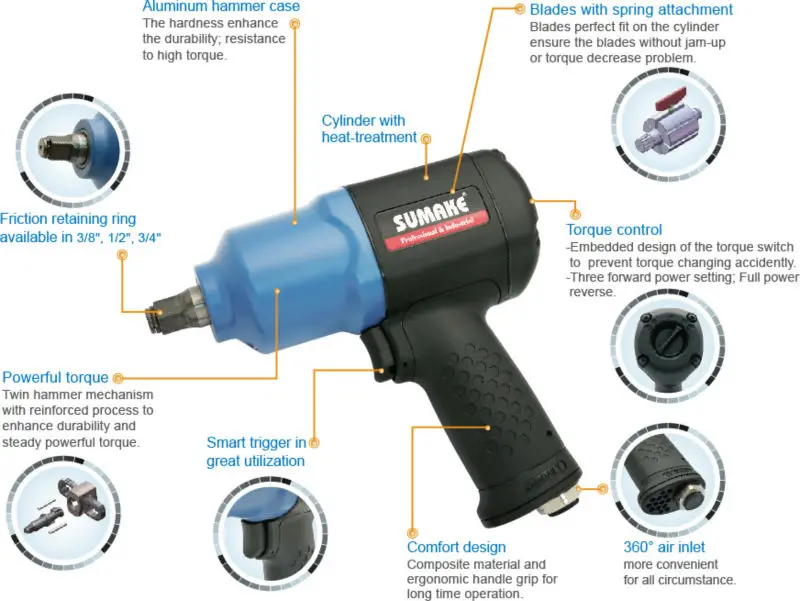 Also, oil can enter the receiver along with the forced air if the mechanical part of the unit is badly worn. Oil, mixing with condensate (moisture), takes the form of an emulsion and gets inside the tool through a hose connected to it. This emulsion is capable of causing corrosion of all parts of the mechanical part of the unit. For this reason, wrenches filled with water and rust, with failed components, often end up in service shops. nine0003
Also, oil can enter the receiver along with the forced air if the mechanical part of the unit is badly worn. Oil, mixing with condensate (moisture), takes the form of an emulsion and gets inside the tool through a hose connected to it. This emulsion is capable of causing corrosion of all parts of the mechanical part of the unit. For this reason, wrenches filled with water and rust, with failed components, often end up in service shops. nine0003 In order not to bring the tool to such a deplorable state, it is customary to install filter-drier on the compressor. Inside it is a filter mesh made of bronze using a special technology.
Air passing through the filter gives off moisture and loses all impurities that enter the sump. Typically, the body of the dehumidifier is made of transparent material to track the amount of contaminants accumulated during operation. nine0003
The sump also has a valve (located at the bottom) through which all contaminants are easily removed.

If the filter is dirty and does not provide the desired air flow, you can tell by the power drop of the tool. The impact wrench starts within normal limits for the first few seconds, but then suddenly slows down and loses power. This fact is explained by the fact that the tool is started due to the accumulated air in the hose, after which it becomes insufficient due to the low throughput of the clogged filter. In such cases, the filter is removed, washed in solvent, and then well purged with air. In extreme cases, the filter must be changed. It can be purchased at stores selling pneumatic tools. nine0003
The lubrication of this pneumatic tool should be taken very seriously. If the unit can work without purified air for some time, then without lubrication it will fail very quickly. The oil supplied to the moving parts of the apparatus reduces friction between them, and also removes wear products in the form of fine dust.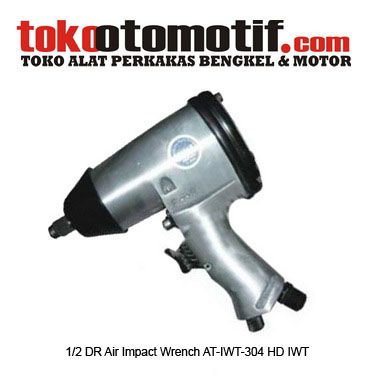 This dust is able to fill the gaps between the blades and the rotor, which slows down their movement. As a result, the power of the tool is significantly reduced. Problem 9 is solved0071 by installing lubricator into the system. The photo below shows its linear type.
This dust is able to fill the gaps between the blades and the rotor, which slows down their movement. As a result, the power of the tool is significantly reduced. Problem 9 is solved0071 by installing lubricator into the system. The photo below shows its linear type.
But installing a "greaser" will only prolong the life of the wrench if it is filled with a special lubricant intended only for pneumatic tools, having the correct viscosity.
Try to get a wrench oil recommended by the tool manufacturer. As a last resort, only a synthetic type oil should be used, which has good anti-wear and anti-corrosion properties and does not contain silicone. nine0003
Do not fill the lubricator with gear or engine oil, because it has a higher viscosity than required and successfully “glues” the air drive blades, due to which the unit loses power.
Specialty lubricants are also available from air tool companies.
If for any reason you are unable to install a lubricator on your machine, then you can get out of the situation in the following way. nine0003
nine0003
Lubrication in this way must also be carried out before long-term storage of the tool. When using the unit in intensive mode, oil should be instilled into the fitting every 3-4 hours. nine0003
Although this method helps to prolong the life of the wrench, it is very inconvenient. You have to interrupt work and spend time cleaning the tool from dirt in the area of \u200b\u200bthe fitting, preparing lubricant. Also, during the procedure, you should carefully monitor that dust does not get into the unit. It is for these reasons that it is recommended to install a lubricator in the system, which will always supply lubricant to the tool in a timely manner.
To prolong the life of your pneumatic tool, it is recommended to listen to some tips from professional craftsmen.
